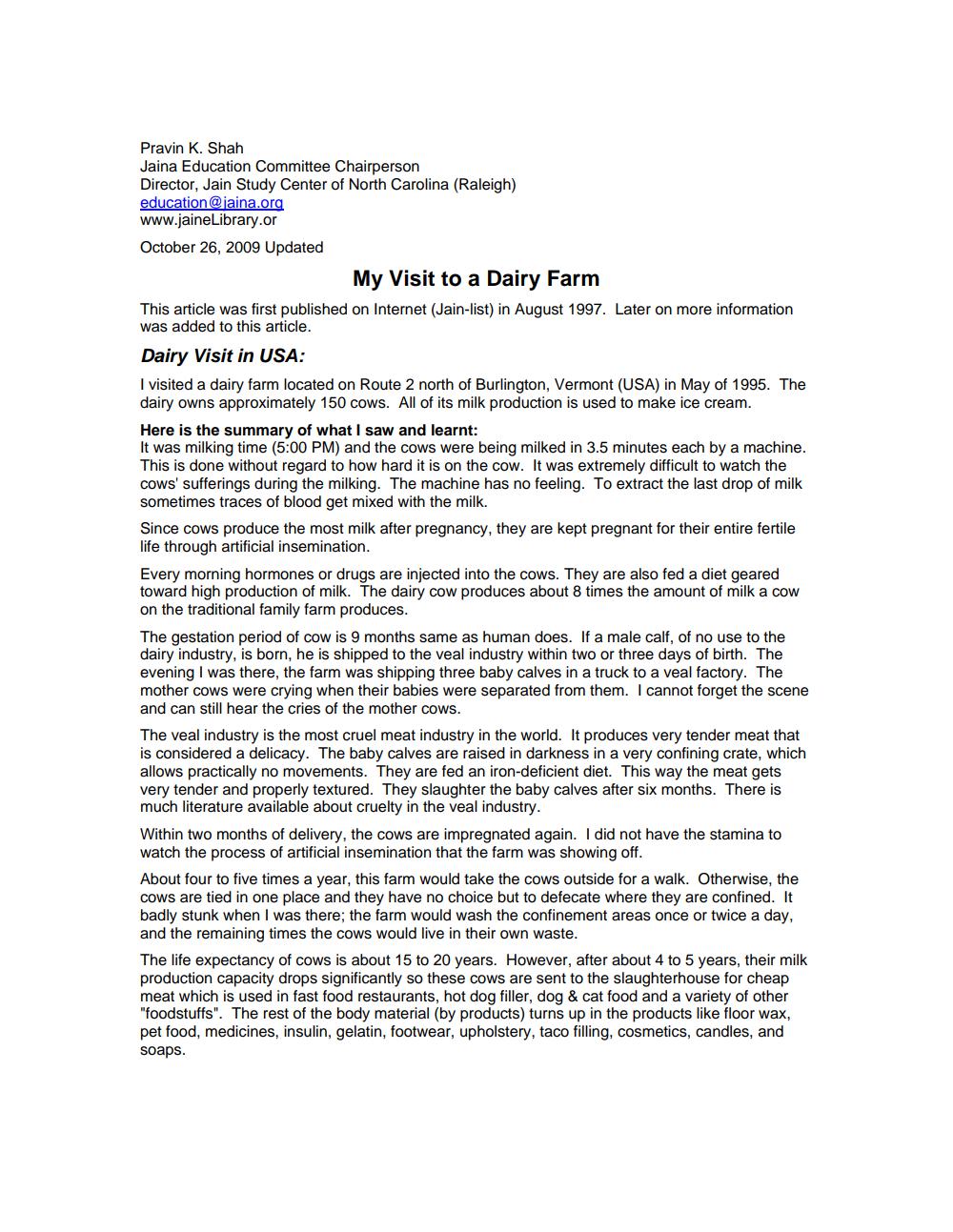Book Title: My Visit to a Dairy Farm Author(s): Pravin K Shah Publisher: JAINA Education Committee View full book textPage 1
________________ Pravin K. Shah Jaina Education Committee Chairperson Director, Jain Study Center of North Carolina (Raleigh) education @jaina.org www.jaine Library.or October 26, 2009 Updated My Visit to a Dairy Farm This article was first published on Internet (Jain-list) in August 1997. Later on more information was added to this article. Dairy Visit in USA: I visited a dairy farm located on Route 2 north of Burlington, Vermont (USA) in May of 1995. The dairy owns approximately 150 cows. All of its milk production is used to make ice cream. Here is the summary of what I saw and learnt: It was milking time (5:00 PM) and the cows were being milked in 3.5 minutes each by a machine. This is done without regard to how hard it is on the cow. It was extremely difficult to watch the cows' sufferings during the milking. The machine has no feeling. To extract the last drop of milk sometimes traces of blood get mixed with the milk. Since cows produce the most milk after pregnancy, they are kept pregnant for their entire fertile life through artificial insemination. Every morning hormones or drugs are injected into the cows. They are also fed a diet geared toward high production of milk. The dairy cow produces about 8 times the amount of milk a cow on the traditional family farm produces. The gestation period of cow is 9 months same as human does. If a male calf, of no use to the dairy industry, is born, he is shipped to the veal industry within two or three days of birth. The evening I was there, the farm was shipping three baby calves in a truck to a veal factory. The mother cows were crying when their babies were separated from them. I cannot forget the scene and can still hear the cries of the mother cows. The veal industry is the most cruel meat industry in the world. It produces very tender meat that is considered a delicacy. The baby calves are raised in darkness in a very confining crate, which allows practically no movements. They are fed an iron-deficient diet. This way the meat gets very tender and properly textured. They slaughter the baby calves after six months. There is much literature available about cruelty in the veal industry. Within two months of delivery, the cows are impregnated again. I did not have the stamina to watch the process of artificial insemination that the farm was showing off. About four to five times a year, this farm would take the cows outside for a walk. Otherwise, the cows are tied in one place and they have no choice but to defecate where they are confined. It badly stunk when I was there; the farm would wash the confinement areas once or twice a day, and the remaining times the cows would live in their own waste. The life expectancy of cows is about 15 to 20 years. However, after about 4 to 5 years, their milk production capacity drops significantly so these cows are sent to the slaughterhouse for cheap meat which is used in fast food restaurants, hot dog filler, dog & cat food and a variety of other "foodstuffs". The rest of the body material (by products) turns up in the products like floor wax, pet food, medicines, insulin, gelatin, footwear, upholstery, taco filling, cosmetics, candles, and soaps.Page Navigation
1 2 3 4
